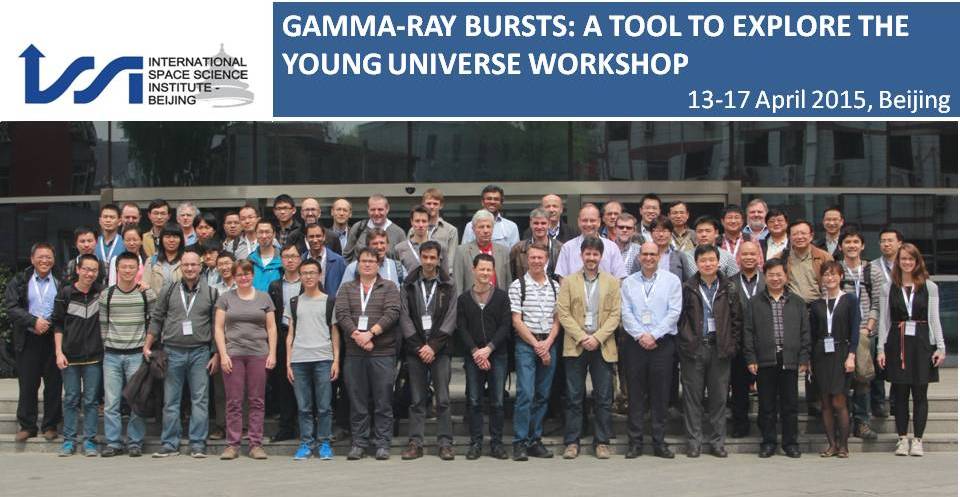Gamma-Ray Bursts Workshop successfully held at ISSI-BJ
On April 13-14, 2015, the ISSI-BJ workshop on “Gamma-Ray Bursts: A Tool to Explore the Young Universe” was held in Beijing. 45 top scientists from all over the world participated this meeting to discuss the progresses and achievements of the research on the connection between Gamma-Ray Bursts (GRB) and the deep Universe.
As a main goal the workshop coherently reviewed and assessed the current knowledge on GRBs, their progenitors, their environment, and the emission mechanisms of the prompt and afterglow emission, in order to understand their nature and origin. The workshop was thus divided into seven main sessions, focusing on the following topics: “GRB observational properties”, “GRBs models”, “progenitors”, “galaxy formation and evolution”, “Galaxy-Ray Bursts host galaxies”, “cosmology with GRBs” and “future directions”.
Furthermore, it focused on the development of synergies between the high-z GRB studies and the surveys of the deep Universe, especially in the framework of the future GRB dedicated facilities (e.g. SVOM, POLAR, Einstein Probe, THESEUS…).The lively debates contributed to a very successful workshop where the participants critically yet constructively discussed the status quo of the research on GRBs and tried to give a future outlook on where future missions, new instrumentation and observing methodologies, new analysis techniques and the development of theory might lead us to.
Under its special program for supporting young scientists, three early career scientists, within two years of their PhD, were invited to speak at the Workshop. The Young Scientist session is intended to give young scientists working on the broad scientific topic of the workshop an opportunity to present their projects in front of the expert audience, and to initiate fruitful discussions with these experts. The session on Thursday afternoon opened new perspectives and was highly appreciated by all participants.
Following the Workshop, its output will be published as a volume in the “Space Science Series of ISSI/ISSI-BJ” by Springer, after publication of the chapters as peer-reviewed papers in the journal of “Space Science Reviews”.



